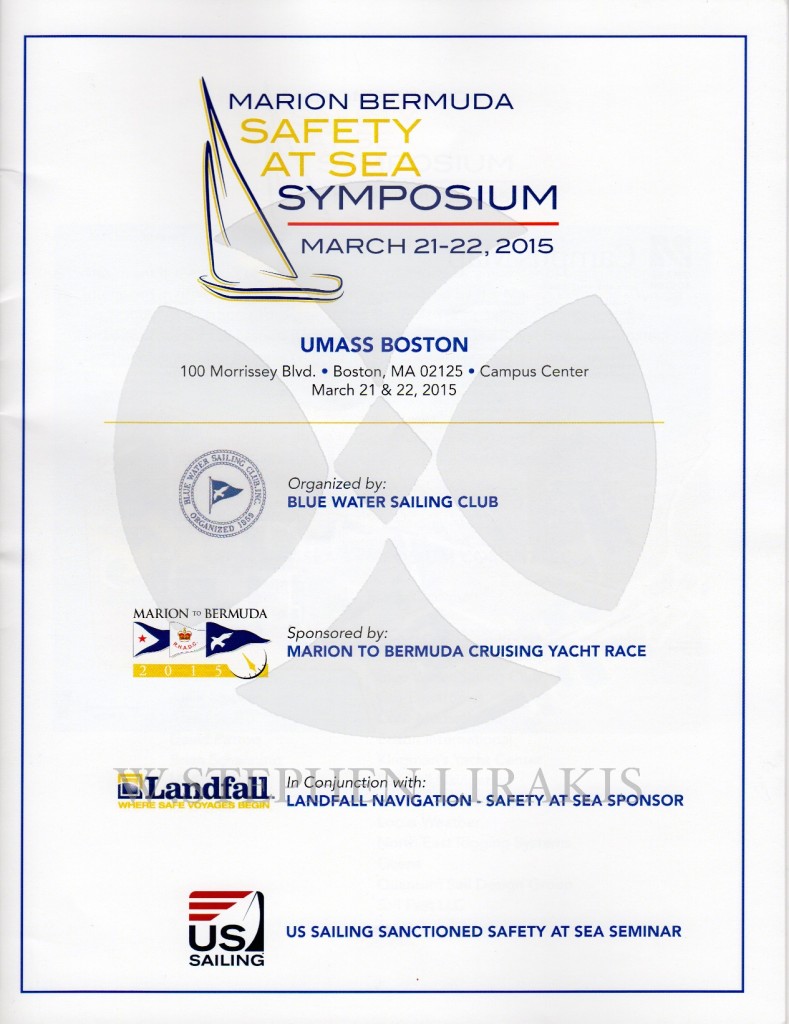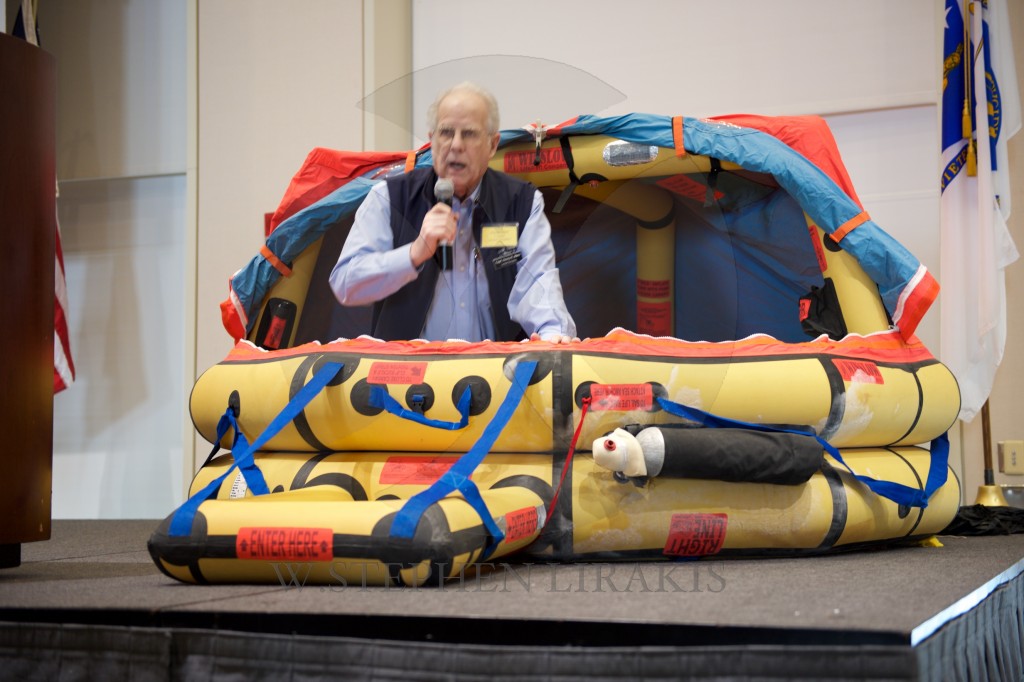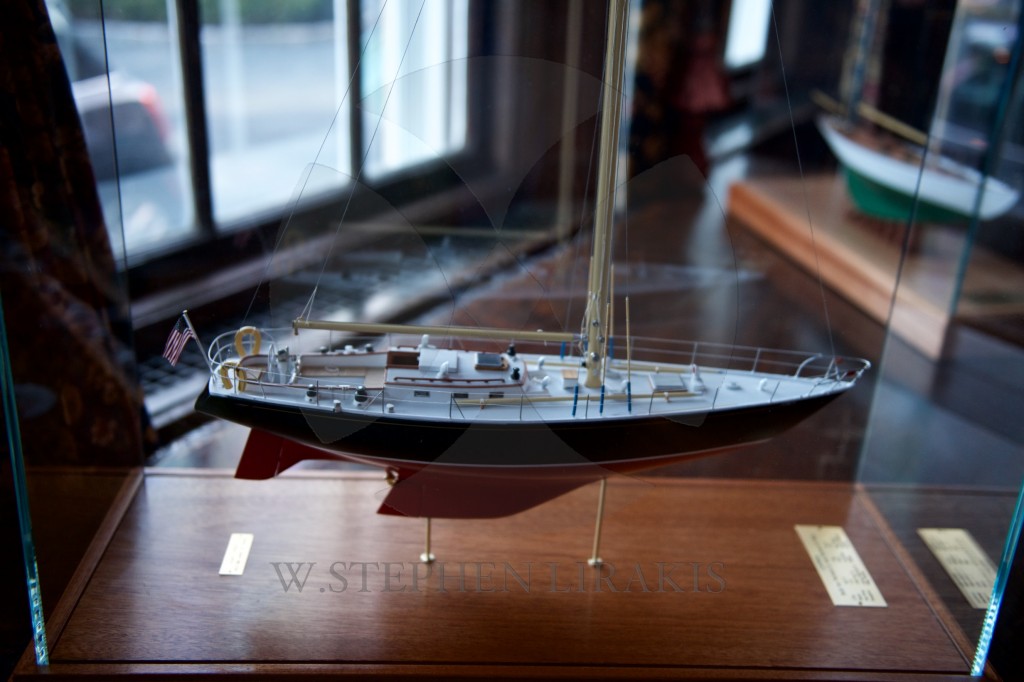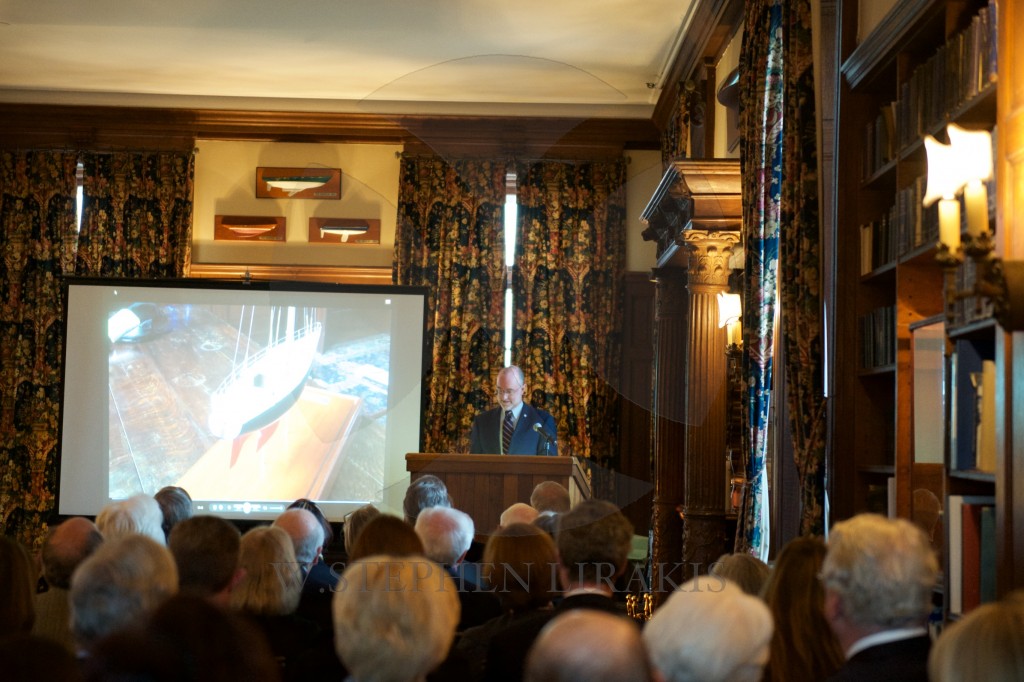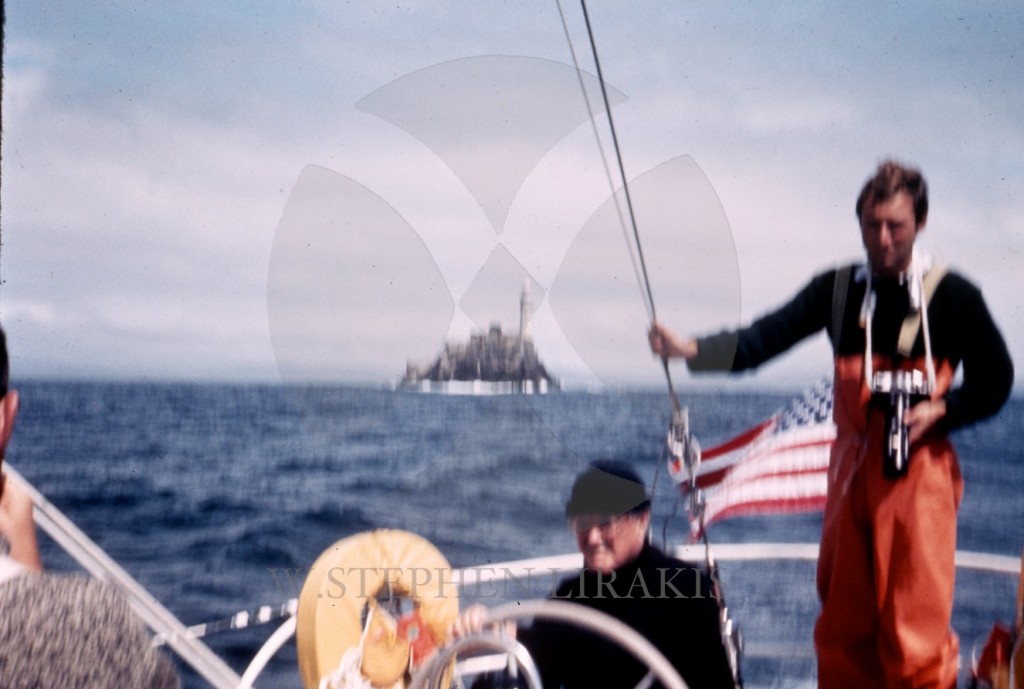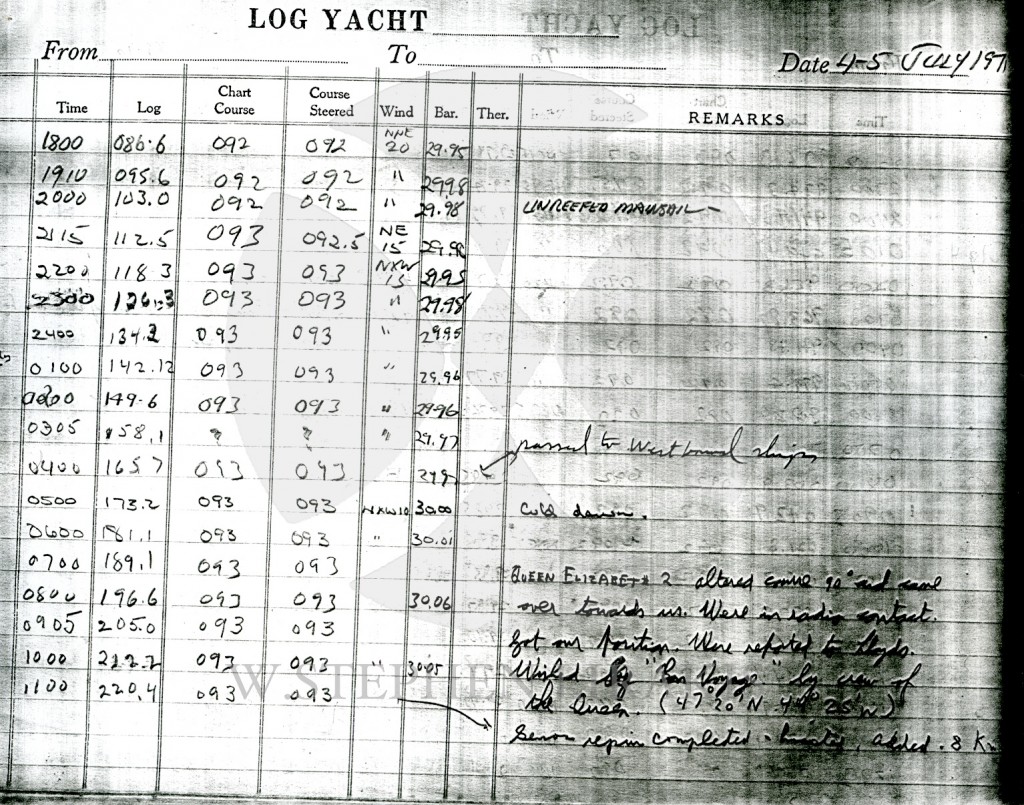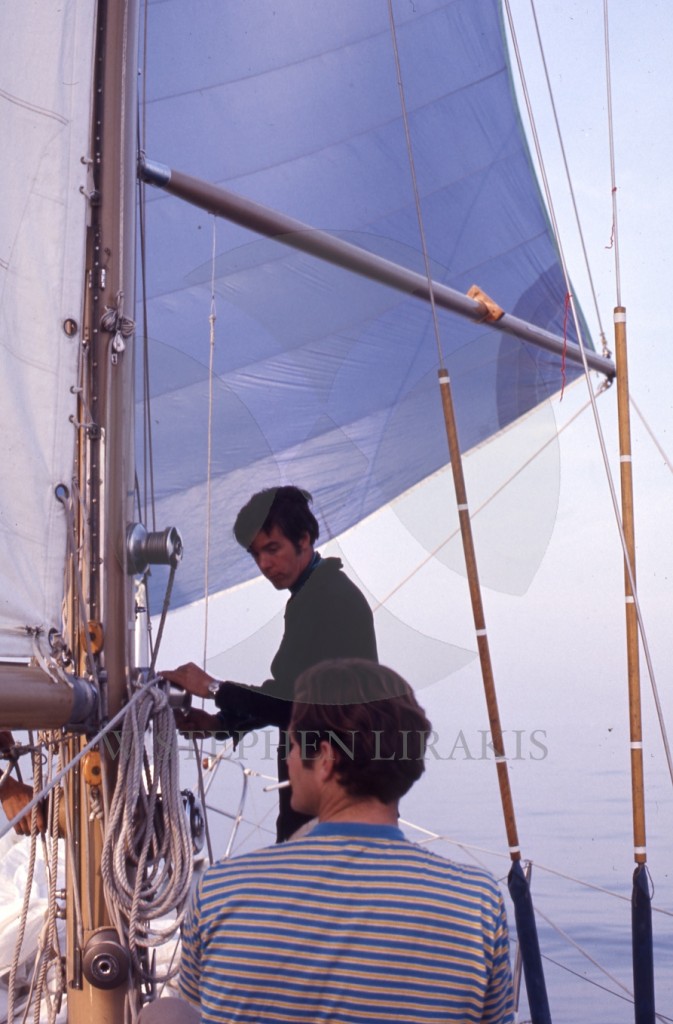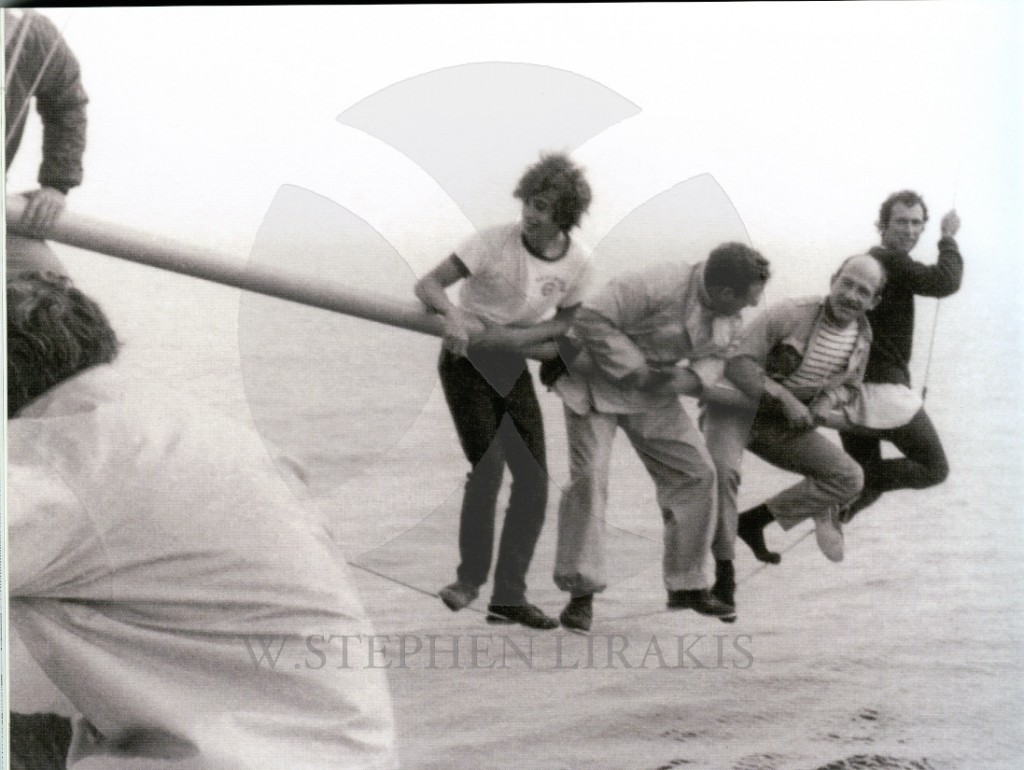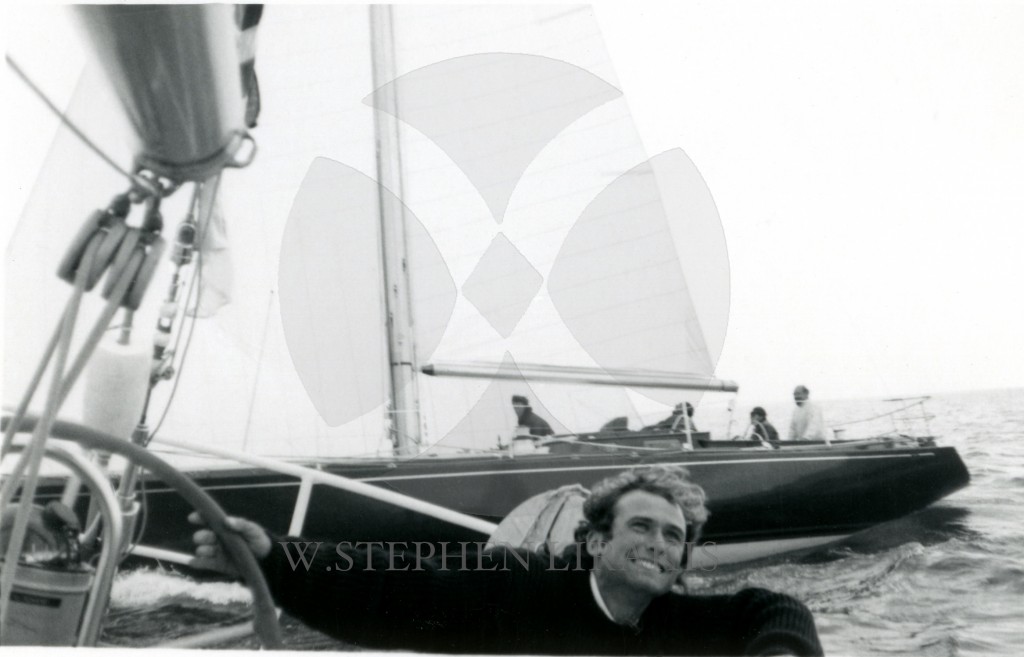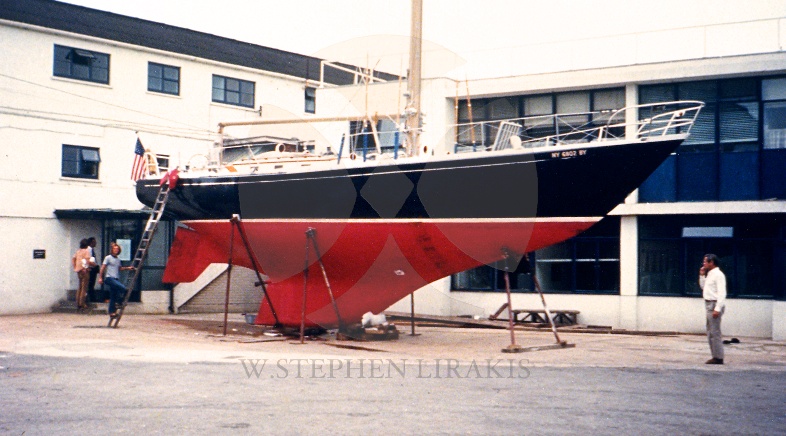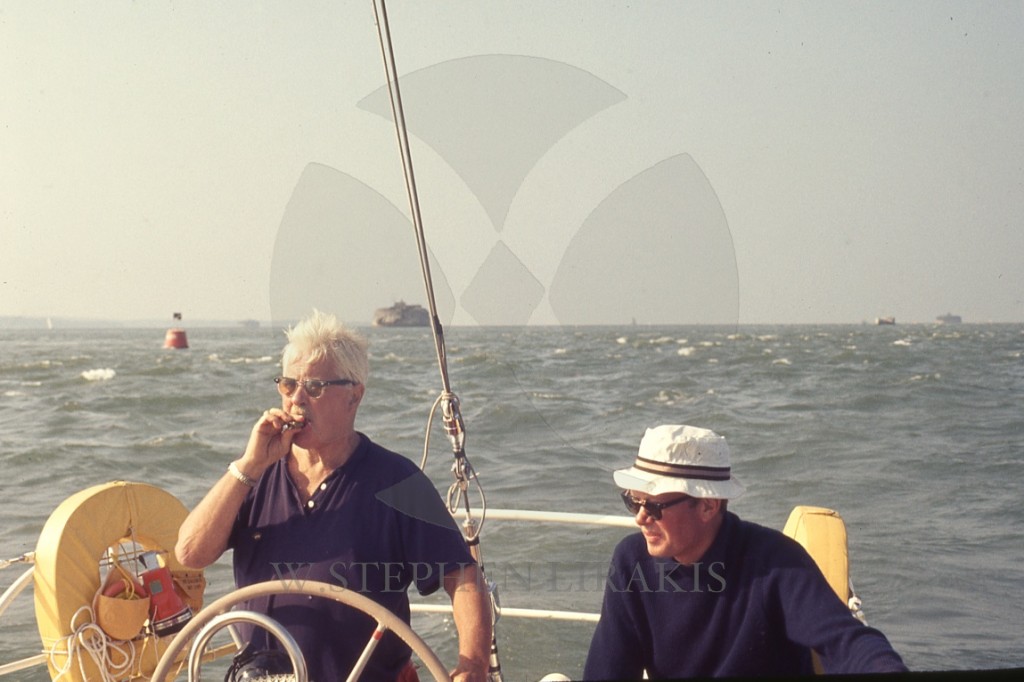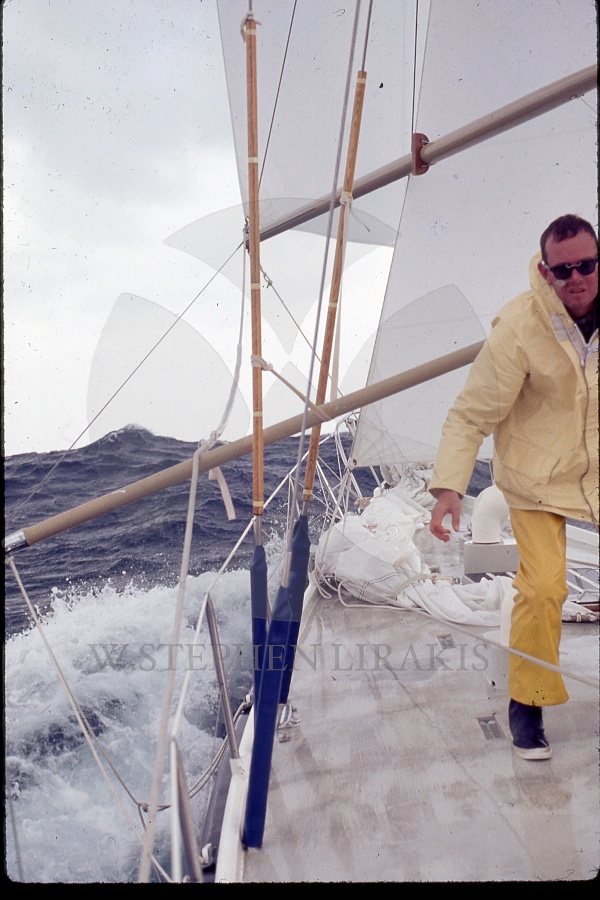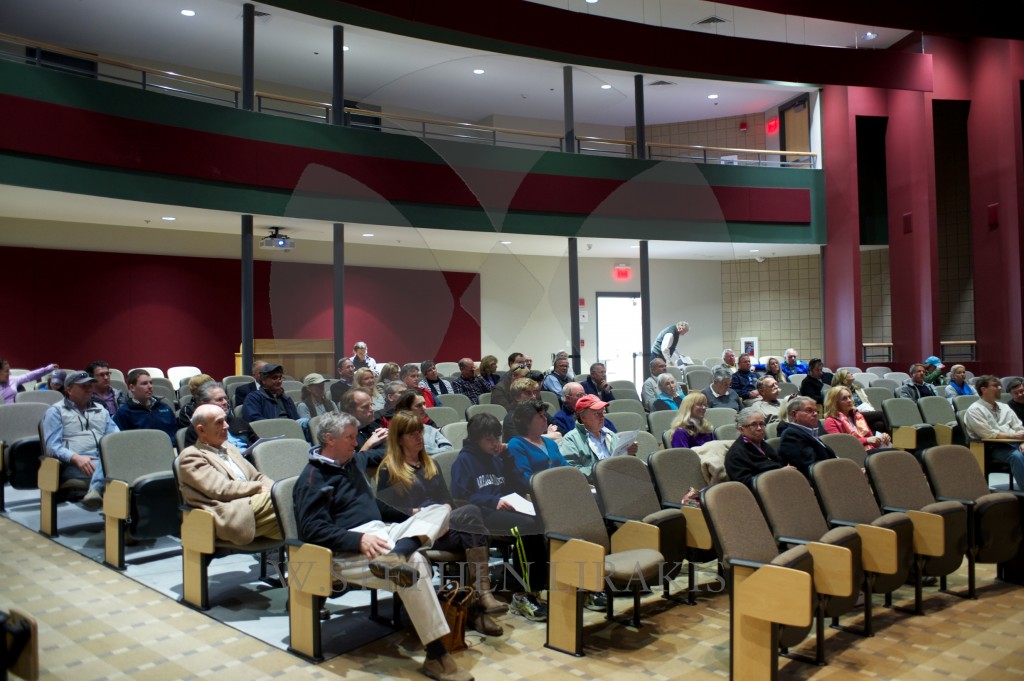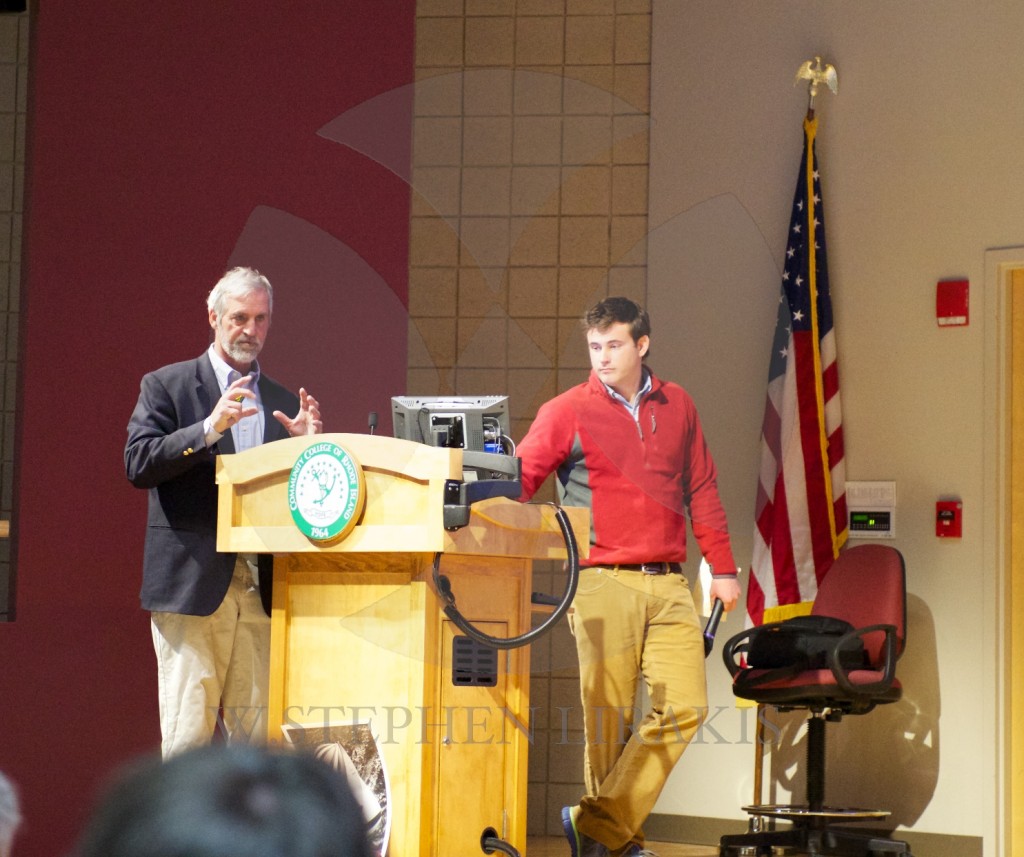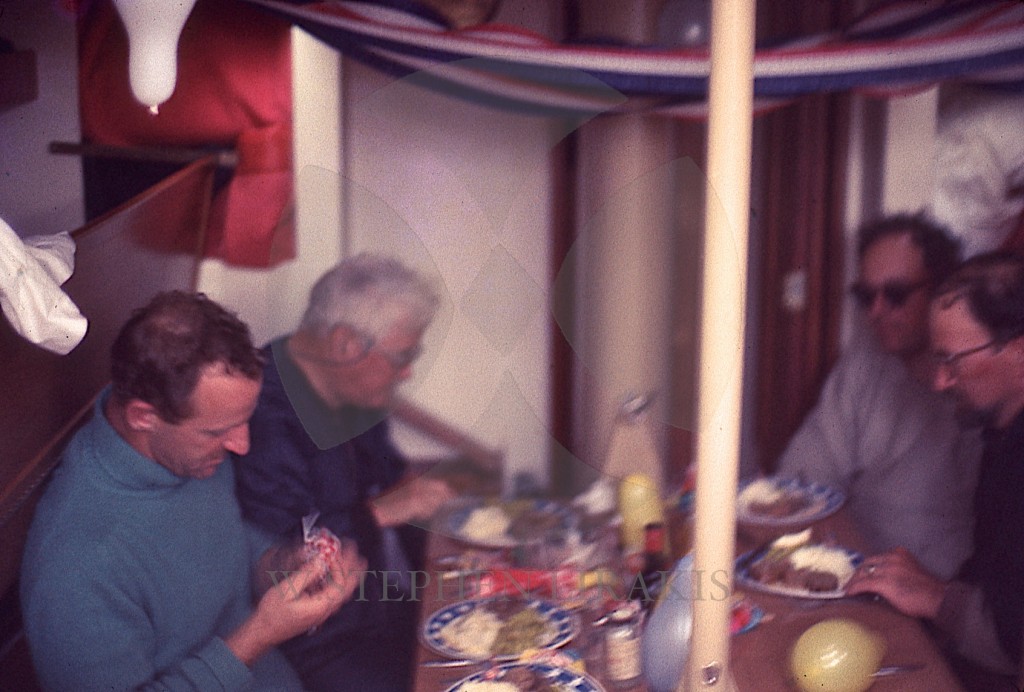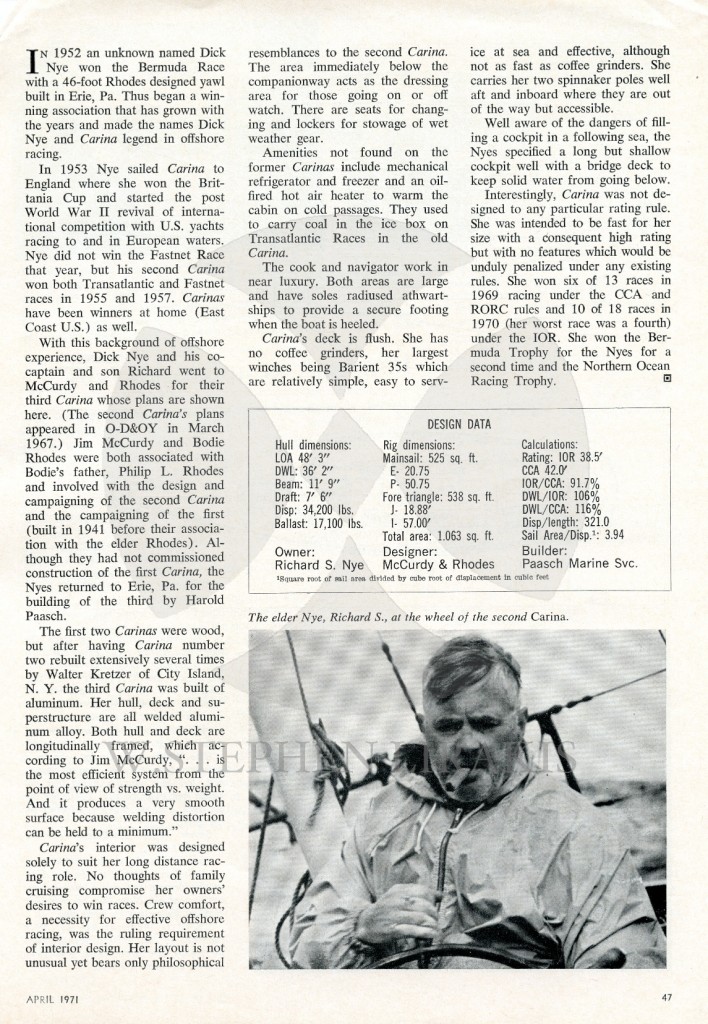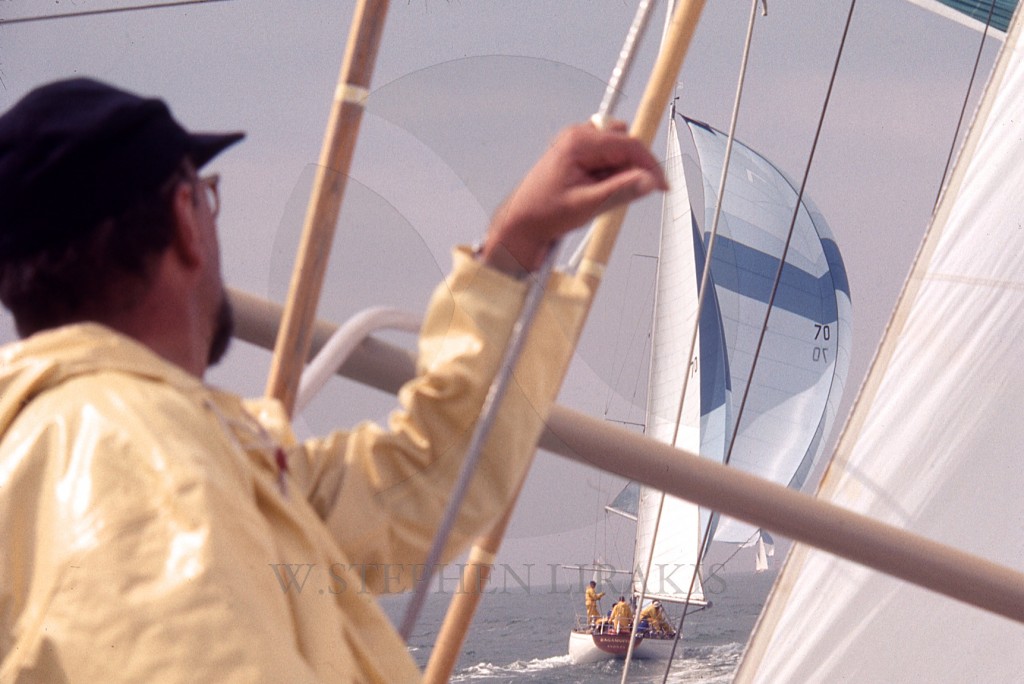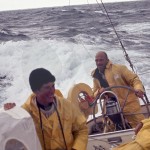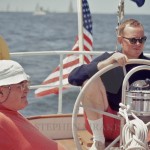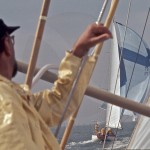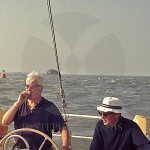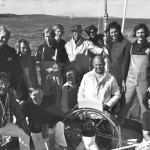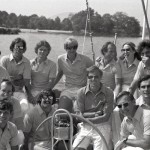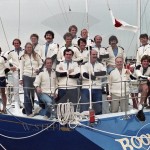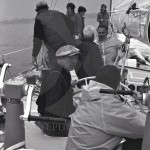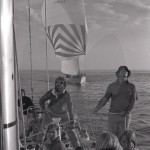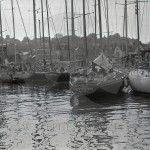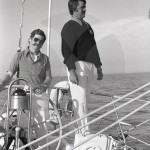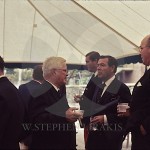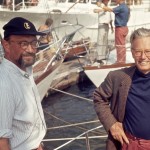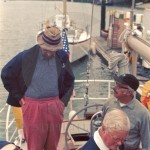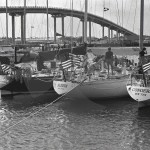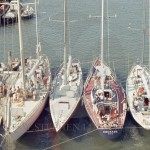Having raced from Newport, RI to Cork Ireland aboard “Carina”; this is the Ireland I was introduced to; and seduced by.
Tag: carina
CARINA MODEL AND SAFETY AT SEA
The safety at sea seminar, another step in preparation for the upcoming transatlantic race. one more thing checked off the list.
I managed to catch the presentation of the as built model of “Carina” by robert and Jonathan Nye to the New York Yacht Club. A memory of the legacy of “Carina” and the Nye family.
CARINA, THE EARLY YEARS
A story behind every photo. In fact so many stories
WHERE WERE YOU JULY 20 1969?
I was aboard “Carina” having finished the trans-atlantic race to Ireland, we were headed to Cowes for the Admiral’s Cup and Fastnet races. ( The US team won the Admiral’s Cup that year). I remember it being cold and foggy as we huddled around the radio at the nav station to listen the the BBC which stayed on beyond their usual sign-off time of mid-night to carry the news of the moon landing.
I will add that when I returned to the US at the end of the season; my college roommate was coming to pick me up at the airport, when another college friend passed me and asked: “how was Woodstock?”. I replied: “what was Woodstock? I was probably the only one of my generation not to have gone, much less not to be aware of the event.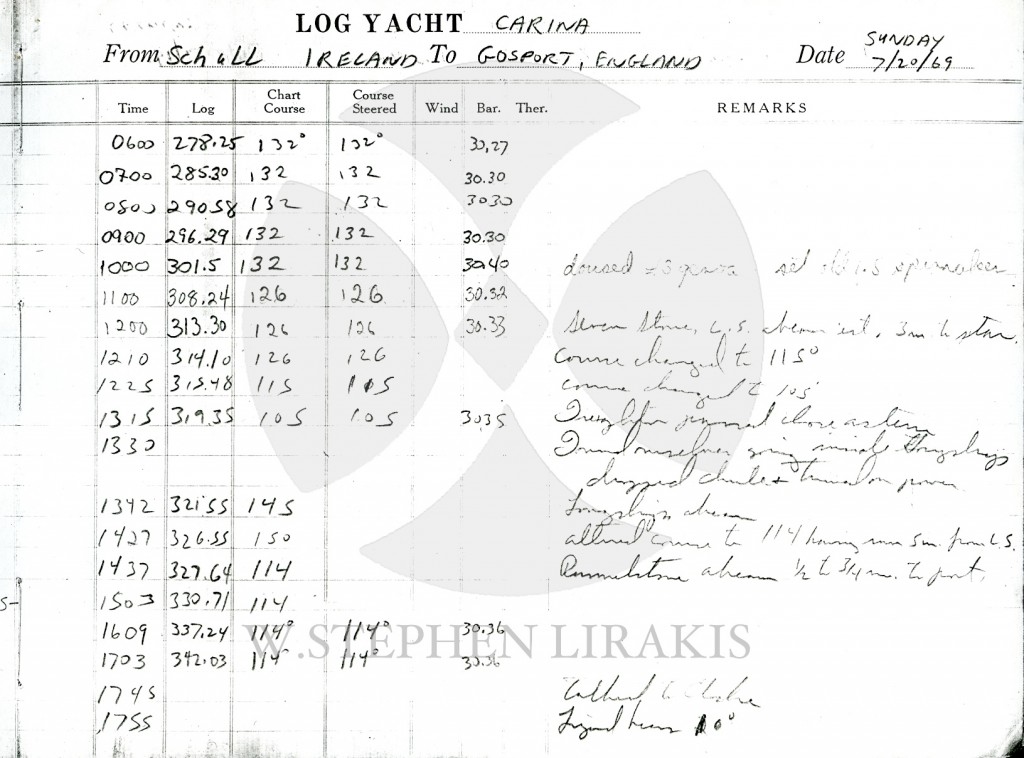
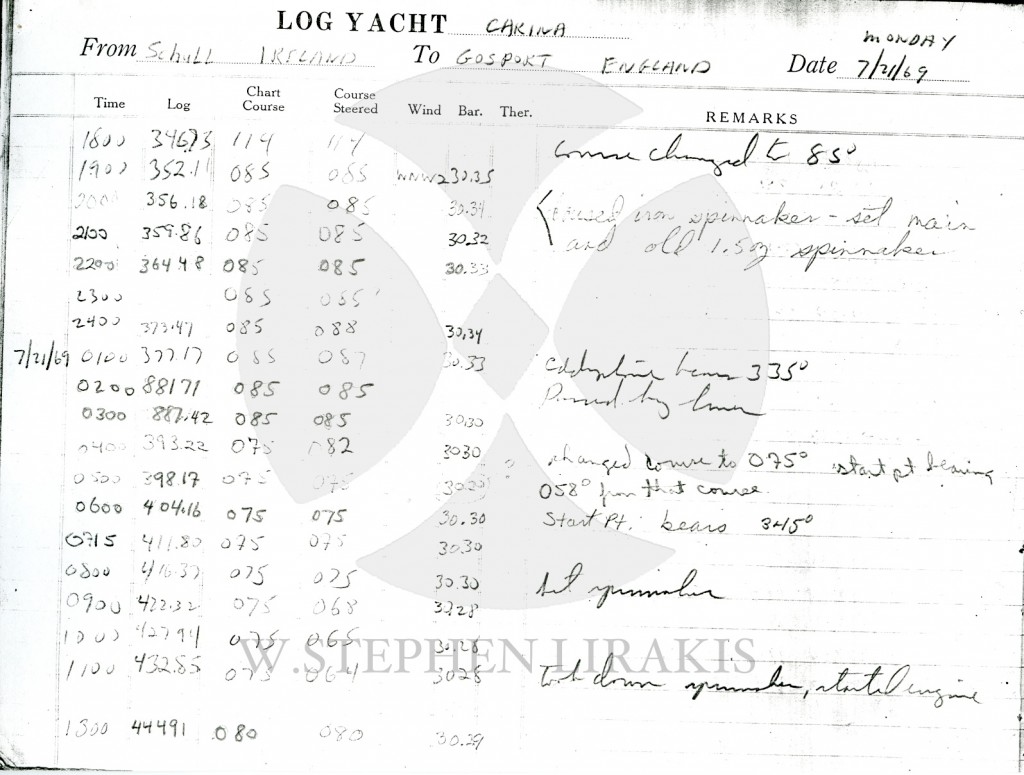
CARINA 1971
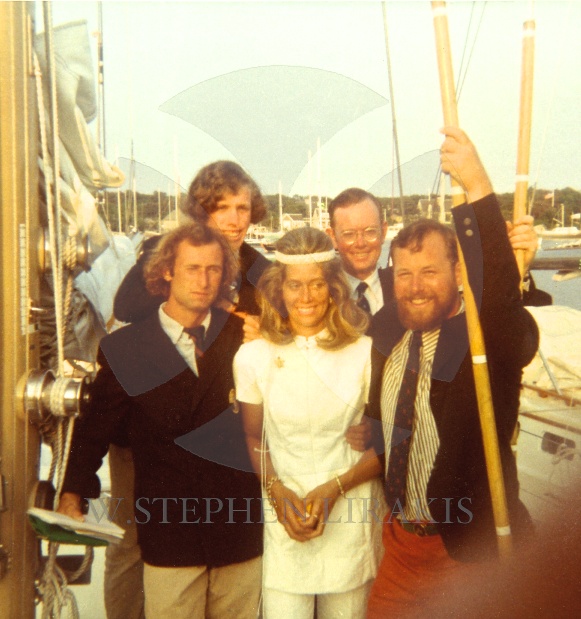
STEPHEN LIRAKIS, JACK CUMMISKEY, MARTHA SMITH, RICHARD B. NYE, CHRIS WICK
A recent post by Ian Walker about a visit from the New “Queen Elizabeth” while crossing the Atlantic to Newport in preparation for the next Volvo race reminded me of our past encounters with the “France”, and the “Queen Elizabeth II”; in each case they passenger ships altered course to come by and chat with us.
As indicated by the log entries we were far enough north that it was almost always damp and cold. Martha Smith, was our cook for the crossing and somehow imagined it would be much warmer and packed a bikini.
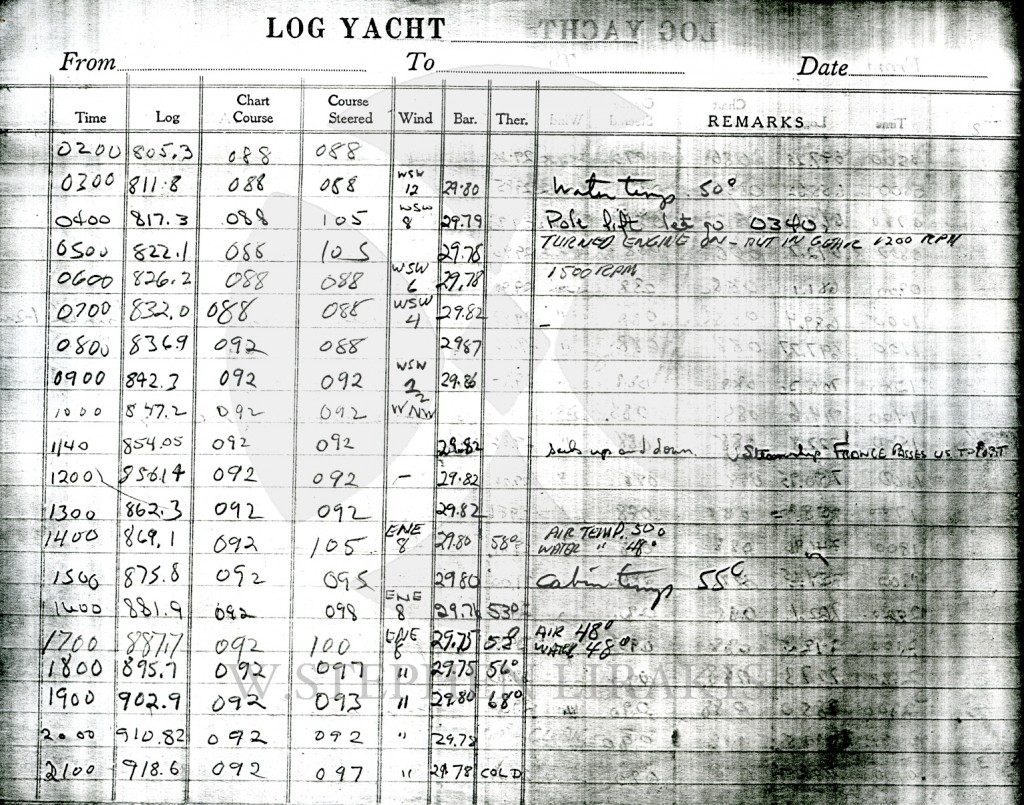
WATER TEMP: 48
CABIN TEMP: 55
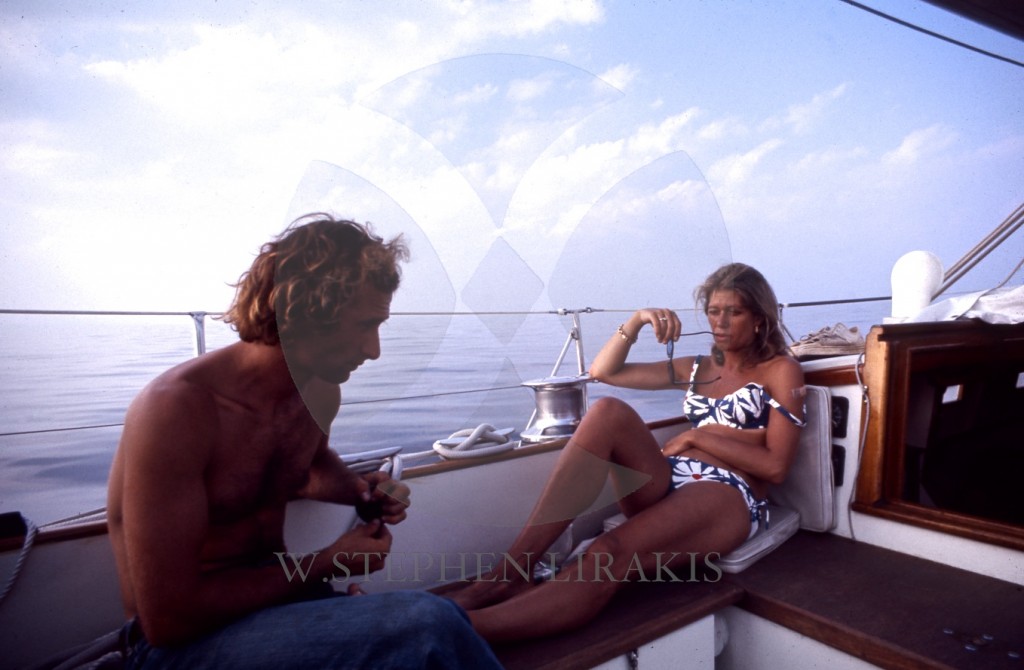
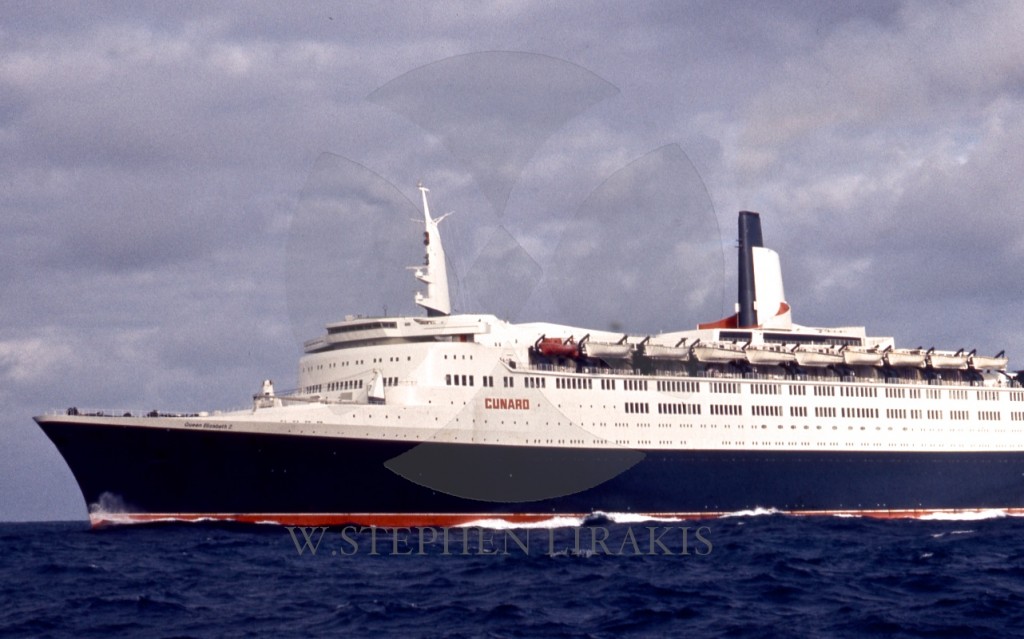
CARINA DAY
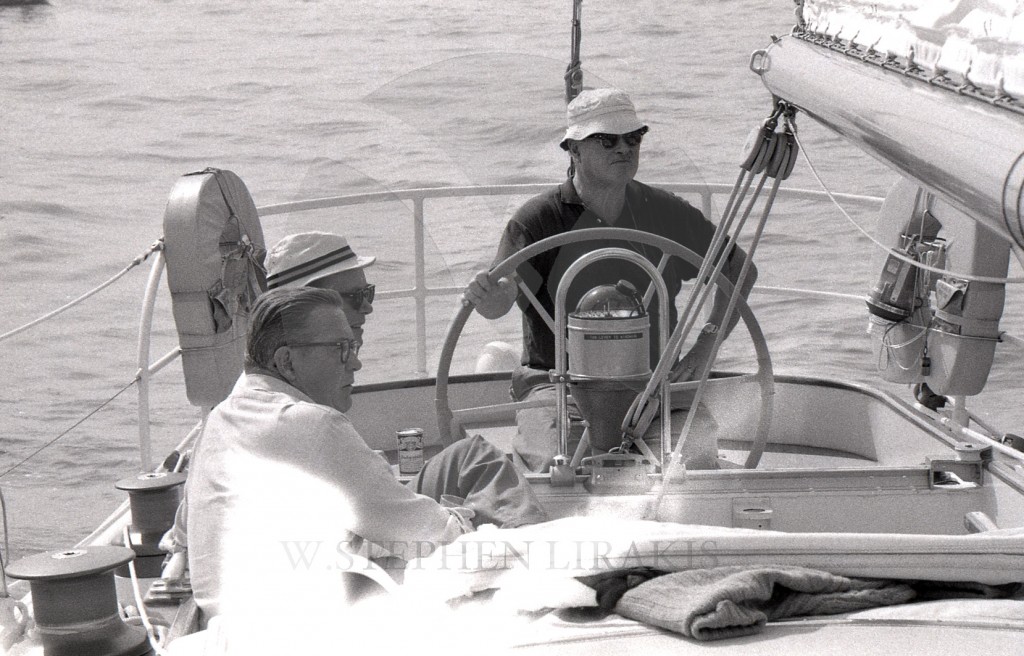
Today was “Carina” Day. In Newport, Reeves Potts and some of his crew spoke of their 2 year campaign. The bookends of the story were two Bermuda race wins. In between were a transatlantic race, the Sydney-Hobart race and an around the world delivery.
At Indian Harbor Yacht Club today was a Memorial service for Richard B. Nye. In a sense, the final chapter of the legacy of “Carina” and the Nye family.
Much has been written about the boat and it’s accomplishments; but perhaps not enough emphasis has been focused on the father and son team that forged that legacy. They worked together and played together a lifetime. That itself is noteworthy.
Reeves Potts, intentionally or not is carrying on that legacy.
JURY DECISION FOR “CARINA”
Newport Bermuda Jury Penalizes Carina
By John Rousmaniere
NEWPORT, R.I., July 9, 2012- The International Jury for the 2012 Newport Bermuda Race has penalized the yacht Carina 15 minutes in elapsed time because a professional sailor briefly steered the boat during the race. The rules of the St. David’s Lighthouse Division in which Carina sailed (and which the boat won) require that only amateur sailors steer while racing.
The ruling does not affect the race standings. The penalty trims Carina’s margin over the second-place St. David’s Lighthouse boat, the U.S. Naval Academy’s Defiance, to 16 minutes, 22 seconds from 34 minutes, 34 seconds. Carina also remains winner of Class 3 under the IRC rule.
The International Jury made its decision after a hearing on Sunday, July 8, in which Carina’s owner and captain, Rives Potts (Westbrook, Conn.), participated. The Jury determined that Carina’s crew list as provided by Potts before the race listed all of the boat’s 12 crewmembers as Category 1 amateur sailors under the International Sailing Federation (ISAF) sailor classification code. The rules for the St. David’s Lighthouse Division permit a boat the size of Carina, a 48-foot sloop, to have as many as three professional sailors in the crew with the condition that none of them steer while the boat is racing.
One of Carina’s crew was Kit Will, whose ISAF Category 1 classification had expired in April 2010. Two days before the race start, Will applied to ISAF and was classified as a Category 3 professional sailor. (There is no Category 2 in the ISAF code.) Will did not inform Potts that he had been reclassified as a Category 3 until after Carina finished the race in Bermuda. By then Carina had been presented with the Corinthian Trophy for top boat with an all-amateur crew. Potts returned the trophy to the Bermuda Race Organizing Committee, which runs the race for the Cruising Club of America and the Royal Bermuda Yacht Club.
Potts filed a report with the International Jury in which he stated that Will had briefly steered Carina during the race. Potts requested that the Jury review the matter. “Mr. Will was aware that Category 3 competitors were not permitted to steer the yacht while racing,” the Jury stated in its decision. “During the race Mr. Will steered the boat on two occasions for brief periods amounting to several minutes.” The Jury imposed the 15-minute penalty.
While the Bermuda Race has no official overall winner, the top boat in the St. David’s Lighthouse Division is generally regarded as the winner because this is the largest division and features amateur sailors.
The members of the International Jury are Peter Shrubb (Bermuda) Chairman, Lynne Beal (Canada), Robert Duffy (Bermuda), Patricia O`Donnell (U.S.), and Arthur Wullschleger (U.S.)
###
For information about the Newport Bermuda Race® contact
John Rousmaniere: email Media@BermudaRace.com +1 646 573-2024
Talbot Wilson: email talbot@talbotwilson.com Tel: +1 970-453-8823
Mob: +1 850 217-7138
Race website: http://www.bermudarace.com/
PHOTOS available from PPL Photo Agency.
Tel +44(0)1243 555561 E.mail: ppl@mistral.co.uk. Web: www.pplmedia.com
NATIONAL SAILING HALL OF FAME
Ok, the National Sailing Hall of Fame in Annapolis Maryland, will evidently induct 10 deserving sailors this year. It is still a new organization, but I am surprised that the Nye family of “Carina” have not made it into the final rounds. In the end election to any organization is a popularity contest I suppose. Read the rules for election: HERE
.
I should add that there is a book now available on the “Carina” story: “Home is the Sailor”
ROB NYE TOUCHES A NERVE
Rob comes from a legacy of prudent seamanship; the “Carina” family. I liken the sentiments to the idea that there was an assumption that when we left the dock, we were on our own.
His remarks have prompted responses on scuttlebutt, where his initial posting appeared.
BOATING ACCIDENTS – A SIGN OF THE TIMES
By Rob Nye, nearly 50 years old
I believe that to understand the recent tragedies in California, we need to
look at the entire sport of sailing and how the competitive side is managed
and promoted.
As harsh as it may sound, both events are the result of a lack of good
seamanship. Webster’s defines Seamanship as: the art or skill of handling,
working, and navigating a ship. In modern times it appears that it is
possible to be a professional sailor and not be a good seaman; it used to be
that seamanship was a requirement to get invited in the first place. Now
it’s what do you weigh, or how hard you can you hike. To navigate, it is to
have superior computer skills.
Following these accidents, Gary Jobson, president of the U.S. Sailing, has
said “we need to take a step back and take a deep breath with what we’re
doing. Something is going wrong here.”
On one hand, I take offense at Gary’s use of “we” as if all sailors bear
some responsibility for a boat being caught inside the breaking surf or
another apparently running into an island while motoring at night. Yet on
the other, speaking as President of the governing body of our sport, perhaps
US Sailing does share some blame for the lack of basic seamanship exhibited
today. I hope the “what we’re doing” he refers to isn’t simply holding
races; as if the event itself is to blame. It isn’t.
When I was growing up, the summer calendar was full of short, medium and
long distance races that included sailing to fixed marks. Even day races
used fixed marks, and once in a while, we’d put the kite up to get to the
windward mark after drifting off the starting line. Once in a while, we even
anchored. Navigation was more than “putting the pin in the box” and entering
a range and bearing to the windward mark. On any given leg we might drift,
beat to windward, reach, change sails and if we were lucky, even broach or
at least enjoy a good knockdown.
It was during this era we learned to use harnesses, sail in the fog, keep an
eye on each other and stay sharp when drifting around at 3am on Long Island
Sound. Day races were sometimes another opportunity to practice seamanship
as the decision to race was left with the skipper, not some government
agency.
I remember leaving the dock for a fall series race with two reefs, the #4
jib and harnesses on for a “casual” race. Now race committees postpone if
the line isn’t perfectly square, or the inflatable mark isn’t directly to
windward, or they cancel the race if it’s blowing over 25 at the dock or
worse, forecast to blow later in the day. Why get a crew that’s seen heavy
weather when we don’t sail when it blows, and if we do all we’re going to do
is sausages? — Read on:
http://forum.sailingscuttlebutt.com/cgi-bin/gforum.cgi?post=13715
HOW MANY DO YOU REMEMBER?
When someone from the sailing fraternity passes it naturally gives you pause. Bobby Connell in in some of the photos above (with a cigarette) How many others do you recognize?

